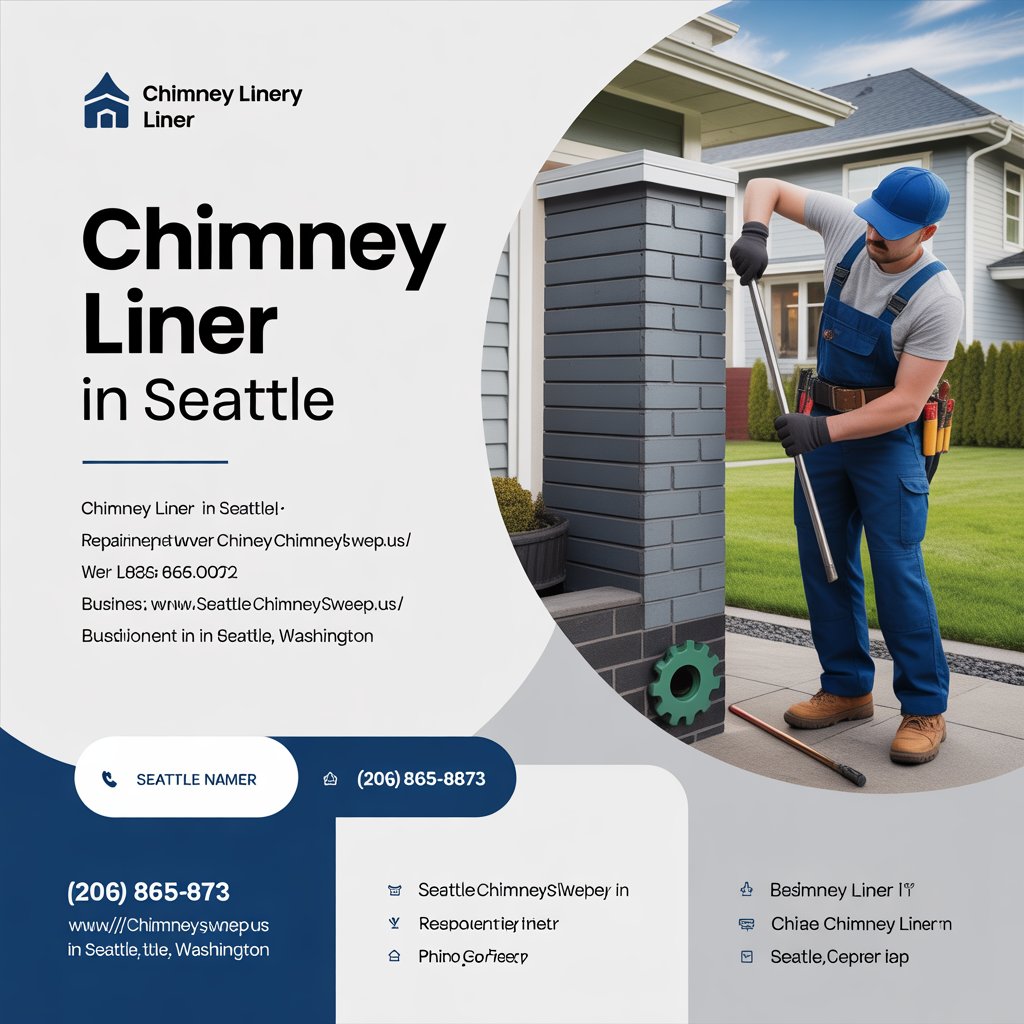If you own a fireplace or wood stove, your chimney probably doesn’t cross your mind often unless it starts acting up. But the unsung hero of your chimney system is actually the liner. It’s the protective tube inside your flue that guides smoke and gases safely outside your home. And if you’re looking for durability, safety, and performance, stainless steel chimney liners are one of the most recommended options out there.But the real question is are they worth the investment? Let’s break it down in simple, practical terms. Whether you’re considering a new install or replacing an older liner, this guide will walk you through the pros, cons, and what to expect with stainless steel. And if you live in a damp, chilly climate like the Pacific Northwest, it’s especially important to make smart choices about chimney upkeep starting with the right liner. Many homeowners rely on stainless steel for Chimney Liner in Seattle.
What Exactly Is a Chimney Liner (And Why Should You Care)?
You might think a chimney is just a hollow brick tunnel, but the liner is where the real work happens. A chimney liner serves three important functions:
- Protects the house from heat transfer that could lead to a fire.
- Keeps the chimney walls safe from acidic byproducts that can eat away at brick and mortar.
- Improves efficiency by allowing smoke and gases to vent properly.
Without a quality liner, your chimney can degrade over time, leading to safety issues or even structural damage. Not exactly the kind of home repair surprise anyone wants in the middle of winter.
Why Stainless Steel?
There are several types of chimney liners out there clay tiles, cast-in-place liners, aluminum, and stainless steel. So why is stainless steel the talk of the town?
Key Benefits of Stainless Steel Liners:
| Feature | Why It Matters |
| Durability | Resistant to rust, corrosion, and weather-related damage |
| Versatility | Works with wood, gas, and oil appliances |
| Flexibility | Available in rigid or flexible options to fit any chimney |
| Fire Safety | Maintains structural integrity even under extreme heat |
| Long-Term Value | Can last 20+ years with proper care |
Let’s be honest Seattle isn’t exactly known for dry, sunny weather. Moisture, creosote, and acidic residue from burning wood can speed up deterioration in brick and tile liners. Stainless steel stands up to that abuse much better, which means fewer repairs and fewer headaches in the long run.
Upfront Cost vs. Long-Term Savings
Okay, let’s talk money. Stainless steel liners aren’t the cheapest option out there. On average, you can expect to pay anywhere from $1,200 to $4,000, depending on your chimney size, height, and complexity of the job. That includes the cost of the liner and installation.
But before you write it off as “too expensive,” let’s compare the numbers.
Chimney Liner Comparison Table:
| Liner Type | Initial Cost | Lifespan | Maintenance | Best For |
| Clay Tile | Low | 20–30 years | Frequent repairs | Newer homes, straight chimneys |
| Aluminum | Moderate | 15 years | Light | Gas-only appliances |
| Cast-in-Place | High | 30–50 years | Minimal | Older chimneys needing structure |
| Stainless Steel | Moderate–High | 20–25 years | Low | Most fuel types, harsh weather |
Yes, stainless steel liners do cost more upfront, but they often require less maintenance, last significantly longer than aluminum, and are easier to install compared to cast-in-place alternatives. Over time, this can lead to fewer service calls and lower costs for repairs related to cracks, leaks, or corrosion. Pairing a quality liner with regular fireplace cleaning helps ensure your system stays safe, efficient, and in top shape for years to come.
Installation: Can You DIY It?
You can technically install a stainless steel liner yourself, especially the flexible kind, but it’s not for the faint of heart. The job involves:
- Measuring the flue and chimney accurately
- Feeding the liner from the roof (yes, the roof)
- Attaching a cap and securing insulation
- Sealing everything properly to meet safety codes
Unless you’re very handy, this is usually a job best left to certified chimney professionals. Not only for your safety but to ensure the system meets local codes. If you’re hiring someone, look for a technician certified by the Chimney Safety Institute of America (CSIA) or a trusted local pro who handles Chimney Liner in Seattle.
What Do Real Homeowners Say?
Here’s something from a Seattle homeowner, Kate M., who recently upgraded her liner:
“We were getting weird smells and draft issues every time we used the fireplace. Turns out our old clay liner was cracked. We went with stainless steel because our installer said it would hold up better in Seattle’s wet climate. Three years later, zero problems—it was definitely worth it.”
When you consider how often your chimney gets used in the fall and winter months, especially in colder regions, having peace of mind that your chimney is both safe and functional is a big deal.
Is a Stainless Steel Liner Right for You?
Let’s recap the best reasons to go stainless:
- You live in a cold or wet climate (hello, Seattle)
- Your chimney vents a wood, gas, or oil-burning appliance
- Your current liner is damaged or inefficient
- You want a long-term, low-maintenance solution
If any of that sounds like you, investing in a stainless steel liner could save you money (and headaches) in the long haul.
Final Thoughts: A Smart Move for Safety & Savings
Chimneys aren’t something we think about often but when they fail, the problems can be costly and dangerous. Stainless steel chimney liners might not be the cheapest route upfront, but they offer strong protection, excellent longevity, and fewer repair needs over the years.So if you’re dealing with an aging chimney or you’re unsure what kind of liner you have, get it checked out before winter kicks into full gear. Especially if you’re in the Northwest and dealing with heavy rain, cold snaps, and plenty of fireplace use. For long-lasting peace of mind, you can’t go wrong with a Chimney Liner in Seattle.
Read more: Chimney Sweep


